It was quite the juxtaposition, honestly. Not exactly what I had in mind for my first fishing trip to Argentina, but then, the whole experience had been somewhat surprising.
There I was, casually sitting in the back seat of a Toyota Hilux next to a waifish equestrian from Pennsylvania, a tumbler of iced Irish whiskey in hand, when the first shot from the 30-06 erupted in the night. The horsewoman quickly levitated into my lap and, from outside the truck’s cabin I heard a spirited Scotsman exclaim, “Great shot, Orek! I’m sure there’s another one up there.”
From the driver’s seat, British ex-pat, and owner of Estancia Huechahue, Jane Wood Williams kept her foot on the brake, giving the marksmen the best possible vantage point for taking down the scourge of the northern Patagonian countryside—wild pigs. Pigs, introduced to Argentina in much the same fashion as they were introduced to dozens of countries worldwide by European colonialists, are hell on the land, and Wood Williams had managed to procure the services of Orek, a marksman from Germany and Ian, a professional hunter from Scotland, to “thin the herd” on her ranch, so to speak.
Jane’s Estancia caters to equestrians, including the lovely woman who ended up whimpering in my lap—literally—after the first rifle report, and thanks to an arrangement with Patagonia River Guides, fly fishers also frequent Huechahue (Hwech-ah-way), which is how Chad ended up standing in the bed of the truck, arms braced on the roof of the cab, between two European professional hunters—one armed with a rifle and the other manning a spotlight bright enough to guide a DC-10 to the ground, and how I came to be drinking chilled Jameson in the back seat while comforting a startled Pennsylvanian after the hunting rifle reported from directly above.
Oh, and I didn’t spill a drop.
It all started that evening, after a daylong float of the Aluminé, a sweeping steppe-country river teeming with beefy rainbows and browns. We pulled into Estancia Huechahue’s long driveway at the peak of the Patagonian fall, pleasantly exhausted after a day spent casting to lively trout. We’d managed to clean up and wander the grounds of the gorgeous high-desert estate for a bit, but then, as fly fishers are wont to do, we found the whiskey, and the estancia’s quaint parlor and patio.
A few hours later—the Argentine dinner hour is usually quite late—we sat around a large table passing bottles of delectable Mendoza district malbec and dining on perhaps the best piece of beef that’s ever passed my lips. Four fly fishers were joined by four more equestrians for dinner, along with Jane and the two European gents. I was busy contemplating a second steak and what I was sure to be the resulting bout with gout after two weeks of ingesting virtually nothing but red meat and red wine, when I caught a bit of Ian’s distinct accent. Naturally, after a belly full of beef, red wine and a respectable dose of brown liquor, I inquired to Ian, “So, what brings you here?”

Ian politely pointed out that he and Orek were professional hunters on loan to Jane for the evening from a neighboring estancia. Wild pigs had been raiding Wood’s manicured grounds and she’d had enough. Time for lethal action.
Ian and Orek, it was explained, were that lethal action.
“We’re going out after dinner tonight to kill pigs,” Ian said, tipping back a glass of malbec with a grin. I let the sentence sit for a second, and looked at Chad, who was looking right back at me.
“Yes we are,” I said to Ian, who grinned at the prospect of a handful of ranch guests assisting with the culling of a few wild pigs that had pushed Wood to her limit. “I mean, if you don’t mind, of course.”
To her credit, Jane was quick to intercede.

“Just so you know,” she said, decked out in a tan sweater over a button-down blouse, “this will not be hunting. It will be a slaughter.”
The Brit traded a life as a London professional in the 1980s, when she married her husband and the two built the estancia. Sadly, not long after completing the ranch buildings, her husband was killed in a tractor accident, leaving Jane to run the property alone. Against substantial odds—consider that Jane is British and that bitterness from the Falkland Islands War in the 1980s still lingers throughout the country—she’s managed the ranch ever since, and started welcoming guests in 1990.
“Come to think of it,” she said, contemplatively, as she drove the truck slowly down the estancia’s driveway, “I’ve lived on this ranch longer than my husband ever did, and he grew up here. I guess I know more about it than anyone.”

We watched from the truck as Ian shined the massive spotlight along the ridgeline, searching for groups of the nocturnal pigs as they rooted among the native vegetation, trashing the landscape and wreaking havoc on the natural order of things. In the distance—at least a good 250 yards—half-a-dozen dark shapes were illuminated by the impressive light, and Orek wasted no time. A shot rang out, and pig dropped like a sack of flour. The rest of the pigs began to sprint over the top of the ridge, but they were too late. Orek downed four animals in the span of a few seconds, and my companion in the backseat of the truck went from simply startled to nearly traumatized.
“This is not what I was expecting,” she said. “Not at all.”
Jane smiled, and took her foot off the brake. More pigs were waiting, and Orek was just getting started.

That may be the beauty of this tour of the north of Patagonia's trout country and the region’s famed estancias—nothing is exactly how you might expect it to be, and there’s a story behind every destination, along with, of course, some of the best trout fishing found on the planet.
From Huechahue and the Aluminé and the Malleo rivers, we ventured deeper into the Andes and poked our way up an alpine canyon along the fabled Traful River to Estancia Arroyo Verde, a hidden oasis in the mountains and perhaps the estancia with the fishiest history.
Arroyo Verde has always been a fishing lodge, and the Traful has always been a sacred river among the fly fishing glitterati. It has been plied by the likes of Ernie Schwiebert and Mel Krieger, as well as President Eisenhower and King Leopold of Belgium. Downstream from Arroyo Verde, Ted Turner owns some of the best real estate in Patagonia along the Traful.

Today, owner Meme Lariviere and her three daughters, Marina, Maria Luisa and Josephina, operate the estancia and they welcome fly fishers from all over the globe to their home. The lodge has been in the family for 80 years, and the ladies running the show today are classy, elegant and Patagonian tough. Anglers chase trophy browns and rainbows, as well as Atlantic salmon that migrate out of Lake Traful into the river each summer and fall.
The river is a technical fishery, often involving sight-fishing to specific fish. Last summer, water levels were very low due to drought, but the fishing remained steady in this drainage that is dramatically impacted by geological and climatic influences. While we were there, the banks were inches deep in volcanic ash from a 2011 eruption in Chile, and shortly after we left, Calbuco Volcano blew its top, coating much of northern Patagonia in ash yet again. The previous eruption had a minimal impact on the Traful, and, with winter snow and spring rain, Calbuco’s ash will be washed away and the Traful will fish well again this coming season.

After spending two days in the field fishing Patagonia’s fabled, brawling Limay river for monster brown trout and beefy rainbows, camping under the southern cross and the rest of the Patagonian night sky, we returned to civilization and headed to Estancia Tres Lagos and the Rio Filo Hua Hum (feelo wah-oom) that runs across the estancia between Lago Nuevo and Lago Filo Hua Hum. The ranch itself is stunning, with views overlooking Lago Nuevo (a serious still-water fishing option for anglers) and the Filo Hua Hum Valley. Owned for generations by the Fernandez-Beschtedt family, Tres Lagos is a working cattle ranch that encompasses nearly 80,000 acres of gorgeous Patagonian countryside. It’s also home to a massive herd of red deer originally imported from Europe for food and sport. Evenings spent on the deck at Tres Lagos are punctuated by the grunts and snorts of rutting stags that sport the massive antlers coveted by hunters the world over.
The river is also a magnificent fishery, home to rainbows and trophy browns, some that are resident and some that run between the lakes the during the fall spawn. It’s a wading angler’s dream stream. Much like the Traful, fishing it requires some measure of stealth, patience and accurate casting—when everything comes together and you get to tangle with the Filo Hua Hum’s browns, it’s a truly a magical experience.

Between estancia visits, the little resort town of San Martin de los Andes served as home base. Think of San Martin as a hybrid between Santa Fe and maybe Sun Valley—it’s pocked with history and named for General Jose de San Martin, who collaborated with Simon Bolivar to ensure much of Spanish South America’s independence from Spain, and is regarded as a hero in Argentina and Peru.
From a visitor’s perspective, San Martin is a sweet little spot to kill a night. Great little bars and restaurants line the streets, and it’s eminently walkable. It sits on the shores of Lago Lacar, and the northern Patagonia Andes tower above it. In winter, it’s a skiers paradise. In summer, it’s a launching pad for fly fishers chasing trout on rivers ranging from the Malleo to the Chimehuin.

Finally, sandwiched amongst two glorious days on the Rio Collon Cura, we stayed at the renowned Estancia Quemquemtreu. This seemingly endless, 200,000-acre ranch encompasses sweeping steppe country in the Patagonian foothills. Stunning views of Lanin Volcano punctuated what I believe to be the most ridiculous fishing of the trip both for trophy browns, and for some of the liveliest, heaviest-shouldered rainbows I’ve ever had the privilege of catching.
The ranch also provides access to the famed Quemquemtreu Creek, a sexy walk-and-wade stream in the early summer and again in the late fall—we visited in early April (early fall) and the drought put the creek off limits, unfortunately.

The ranch itself is significant hereford beef operation owned by Paula and Martin Zimmerman. It sports a herd that’s 5,000-head strong, and is also home to red deer, native guanaco (they’re like llamas) and elusive pumas. The infrastructure of the estancia is incredible—there are more than 30 buildings, including sleeping quarters, gathering rooms, a dining room and a separate bar decorated in “fly fishing chic” and visited by anglers from all over the world. Visitors eat perhaps the finest sampling of free-range beef I’ve ever tasted, and, of course, every meal is punctuated by yet another silky bottle of malbec that provides just enough punch to properly alter your brain chemistry for a day on the river.
The Collon Cura was likely my favorite river of the trip—quick runs and tail-outs offered perhaps the fastest-paced fishing for trophy rainbows I’ve ever experienced, and with a 12-rod maximum on the river any given day, the fishing will almost always be good. The river is a big freestoner that gives way to little backwater sloughs where big browns stake out froggy water, and then to swift runs where tailwalking rainbows use the current to their advantage and go on runs that took both Chad and I into our backing many times.

We frolicked for hours within the same 100-yard stretch of river, braving swift, knee-deep runs across slimy, softball-size rocks to access tail-outs and drop-off that literally burst at the seams with 20-inch trout. Only when our arms ached and our stomachs rumbled did we pile back into a PRG North drift boat and head for the ranch.
And that might be the best of many assets of visiting Patagonia’s estancias—no matter where you end up at the end of the day, it’s almost like going home. The families who run the ranches are experts in hospitality, and truly seem to enjoy having hosts of stanger fly fishers wander through their living rooms every few days. It’s uniquely Argentine adventure—chasing trout in rivers so big, so vast and so largely untouched, and then returning to a comfortable, homey outpost in the middle of nowhere, only to be pampered with some of the best cooking on earth and coaxed into a state of near-Elysium by good whiskey and better wine.

I’ll admit, I was skeptical of a trip to Patagonia. Hell, I have trout in my eastern Idaho backyard that swim in waters that cross land I can access on a whim. But fly fishing in Argentina is a cultural endeavor, not just a physical exercise. It’s about community and the opportunity to experience something most anglers never will. It’s also a time warp—think Montana half a century ago, or Colorado before Denver was more than a supply town. Fly fishing for trout in Patagonia is, simply put, an adventure. These rivers are wild. They are sparsely visited. They pulse with wild fish. When you think of world-class fly fishing, Patagonia is the barometer by which “world class” is measured.
Yes, it comes with a price—for many, it’s a once-in-a-lifetime experience. Speaking from that perspective, I can say I’m glad I did it. That I might only get to do it once breaks my heart.
If You Go
Choosing a Lodge
The estancias of Argentina's northern Patagonia region are bucket-list destinations for trout anglers worldwide. They span thousands — often hundreds of thousands — of acres and are ideally bisected by some of the best trout water on the planet. While there are several options for visiting the region's fabled ranches, Patagonia River Guides offers a unique program for anglers who want to take one of the most iconic experiences in all of fly fishing — a tour of Patagonia and its stunning rivers while staying on working ranches in a beautiful backdrop. .
When to Go
The best times to visit Argentina's northern Patagonia region is from spring through fall — late November through early April. Each month is a little different, but the fishing is strong throughout the summer, featuring trophy trout, dry flies and the chance to catch a fish of a lifetime.
How to Get There
Several U.S. hubs offer direct flights to Buenos Aires. From there, travelers shuttle from the international airport to the city's domestic airport, where they can catch a flight to San Martin de los Andes. From there, the tour of the estancias — and some of the best trout fishing anywhere — awaits. .





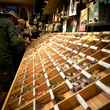
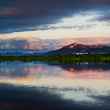




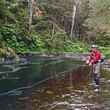
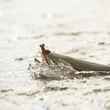



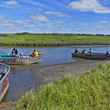
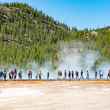



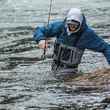
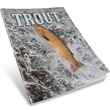



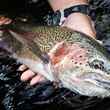


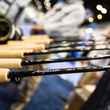
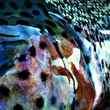
Comments